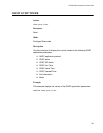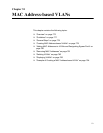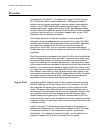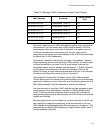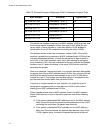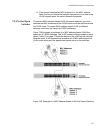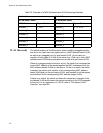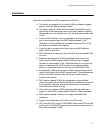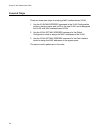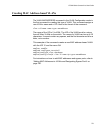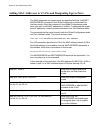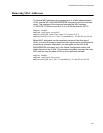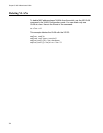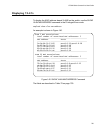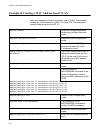
AT-9000 Switch Command Line User’s Guide
777
Guidelines
Here are the guidelines to MAC address-based VLANs:
The switch can support up to a total of 4094 port-based, tagged,
private, and MAC address-based VLANs.
The egress ports of a MAC address-based VLAN function as a
community in that assigning a port to one MAC address implicitly
defines that port as an egress port of all the addresses in the same
VLAN.
A source MAC address must be assigned to at least one egress
port to be considered part of a MAC address-based VLAN.
Otherwise, VLAN membership is determined by the PVID of the
port where the packets are received.
A port can be an egress port of more than one MAC address-
based VLAN at one time.
MAC addresses can belong to only one MAC address-based VLAN
at a time.
Broadcast packets cross VLAN boundaries when a port is an
egress port of a MAC address-based VLAN and an untagged
member of a port-based VLAN. Given that there is no way for the
switch to determine the VLAN to which the broadcast packet
belongs, it floods the packet on all ports of all affected VLANs.
Entering MAC addresses as part of a MAC address-based VLAN
does not add them into the MAC address table. The addresses are
added to the MAC address table during the normal learning
process of the switch.
MAC address-based VLANs are supported in edge switches,
where end nodes are connected directly to the switches, as well as
in intermediary switches, where the switches are connected to
other Ethernet switches or hubs.
The maximum number of MAC addresses that the switch can
support in all its MAC address-based VLANs is 1024 addresses.
MAC address-based VLANs do not support multicast MAC
addresses.
Egress ports cannot be part of static or LACP trunks.
SFP ports 25 to 28 on the AT-9000/28SP Switch and SFP ports 49
to 52 on the AT-9000/52 Switch cannot be used as egress ports in
MAC address-based VLANs.



